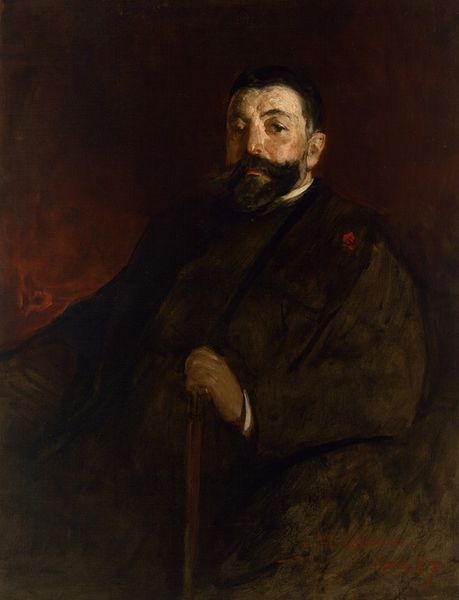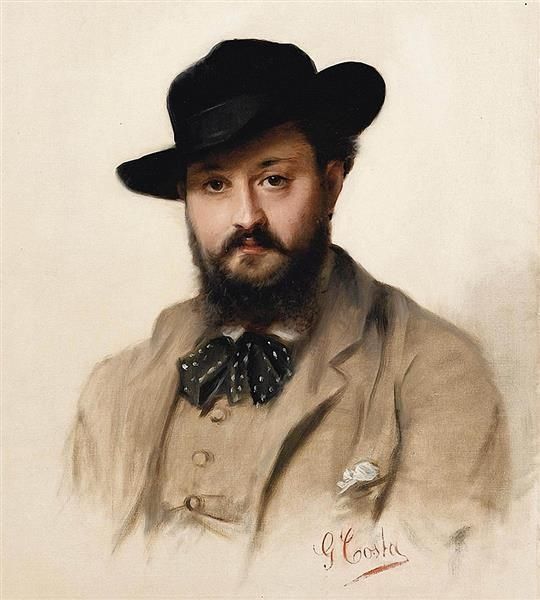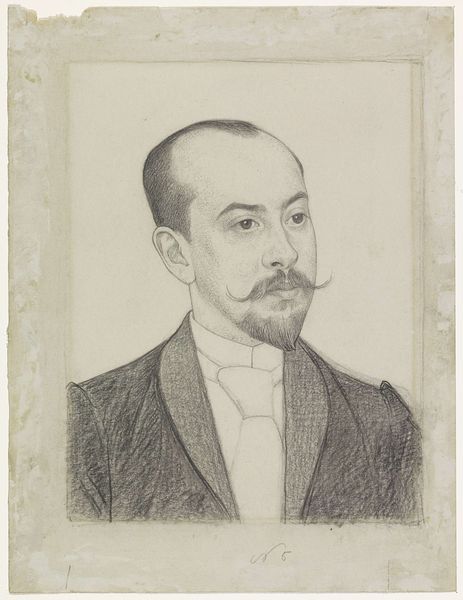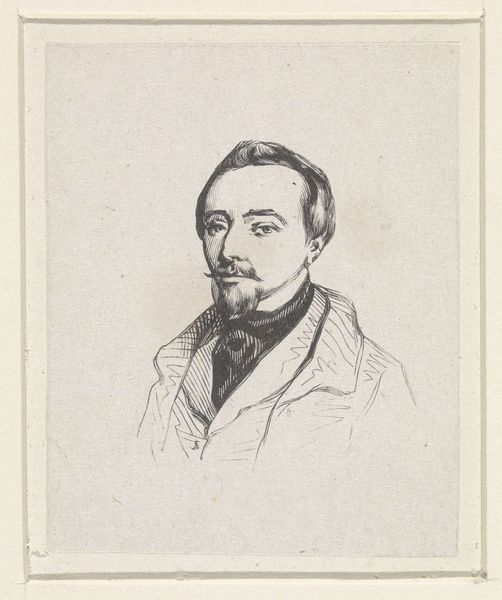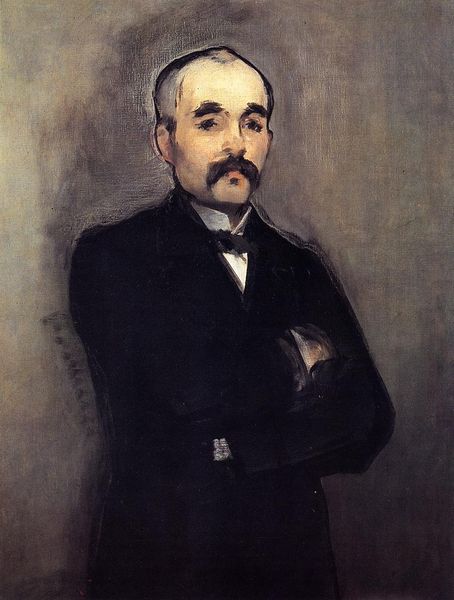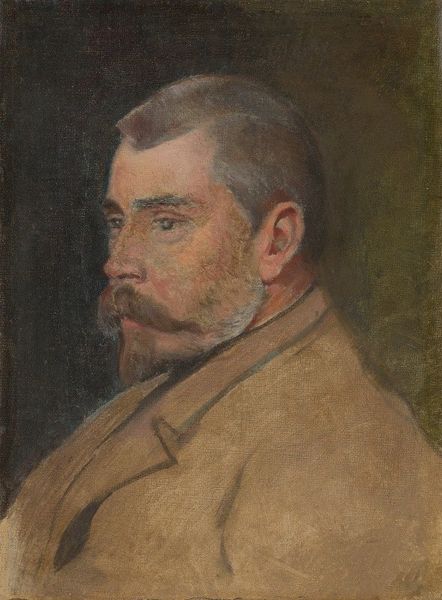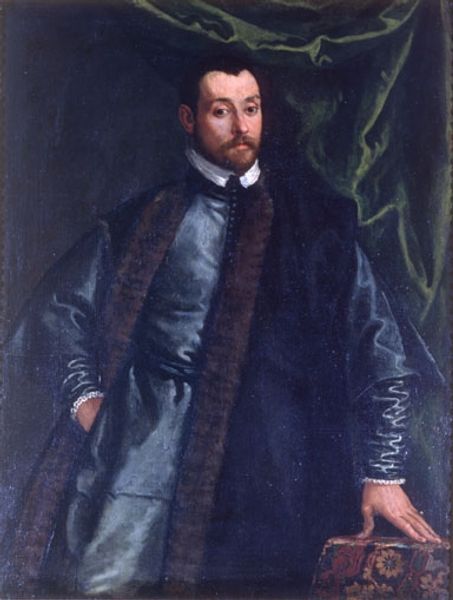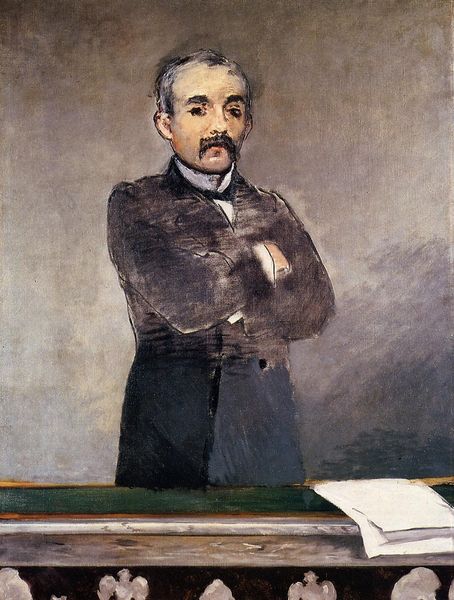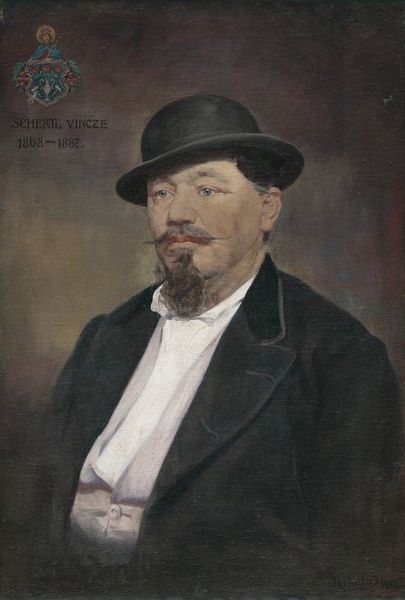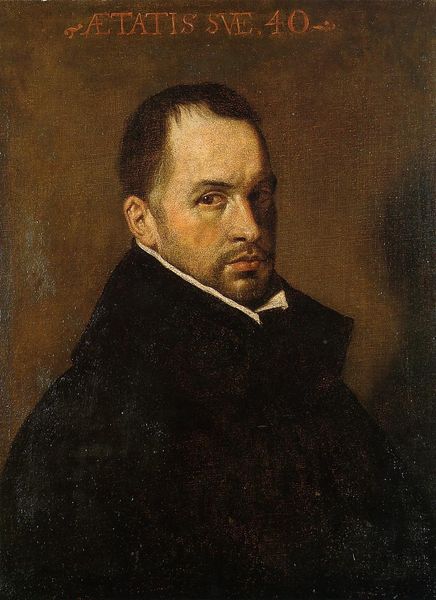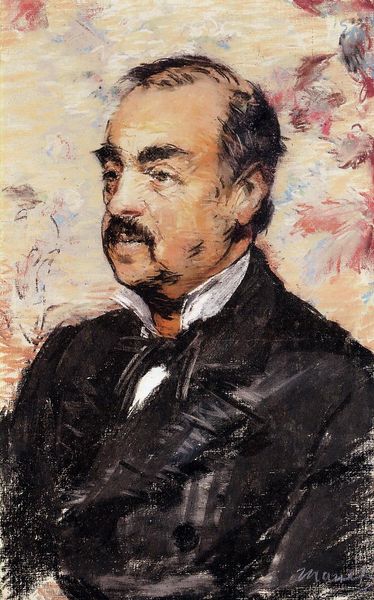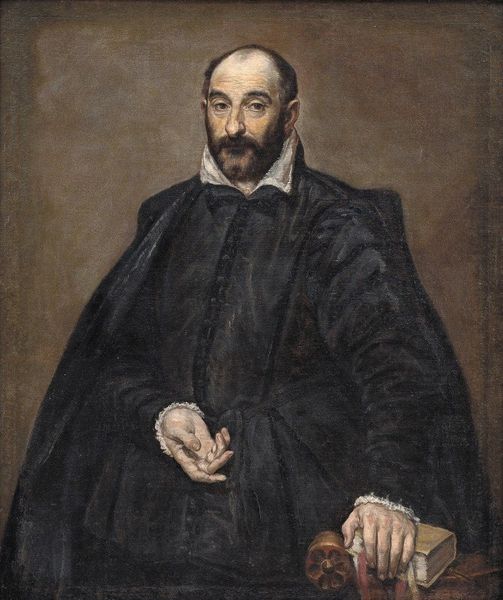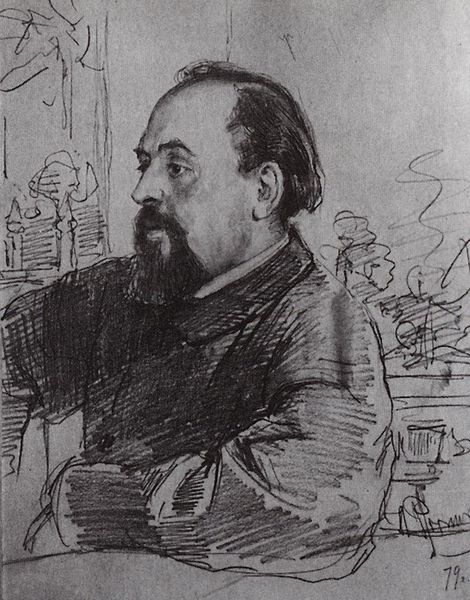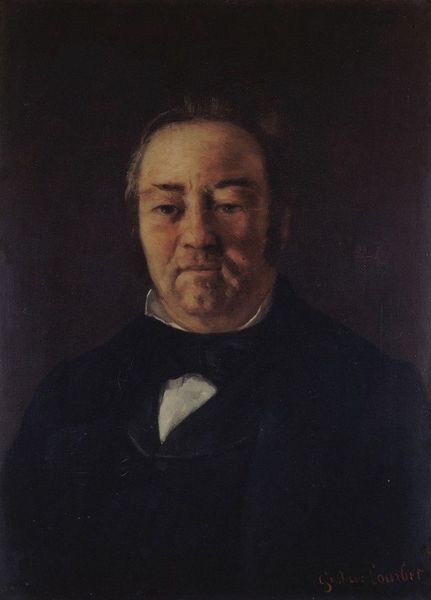
Copyright: Public domain
Editor: So, this is Édouard Manet’s 1880 portrait of composer Emmanuel Chabrier, rendered in oil paint. The somber colors create a sense of quiet contemplation, wouldn't you agree? What stands out to you when you look at it? Curator: Beyond the artistic skill, I see a negotiation of masculinities within 19th-century Parisian society. Chabrier, a composer, is depicted not as the flamboyant artist stereotype, but as a bourgeois gentleman. Notice the subtle tension between his creative profession and his conforming attire. Does Manet reinforce or subvert class expectations and gender roles here? Editor: I hadn’t considered that tension. He does seem... contained. How does that tie into the broader cultural landscape of the time? Curator: Consider the rise of the bourgeoisie and the simultaneous romanticizing of artistic genius. Men like Chabrier navigated that space. This painting becomes a study of identity, specifically male identity, at a crossroads. Manet's impressionistic style further complicates matters. Is he capturing a fleeting moment or commenting on the performative aspects of social identity? Editor: That's a really interesting way to put it. The brushstrokes feel so immediate, and yet, there's so much artifice suggested. Does Chabrier’s social standing at the time play into that contrast? Curator: Exactly. He’s neither fully rejecting nor embracing societal expectations. That tension mirrors the Impressionists' own struggles for recognition. It raises questions about artistic validation and the politics of representation, which are as relevant today as they were then. Editor: It's incredible how much can be unpacked from one portrait. It feels much more radical when considered this way. Curator: Precisely. It’s not just a painting of a composer; it's a lens through which we can examine social norms, artistic rebellion, and the ever-evolving performance of identity.
Comments
No comments
Be the first to comment and join the conversation on the ultimate creative platform.
